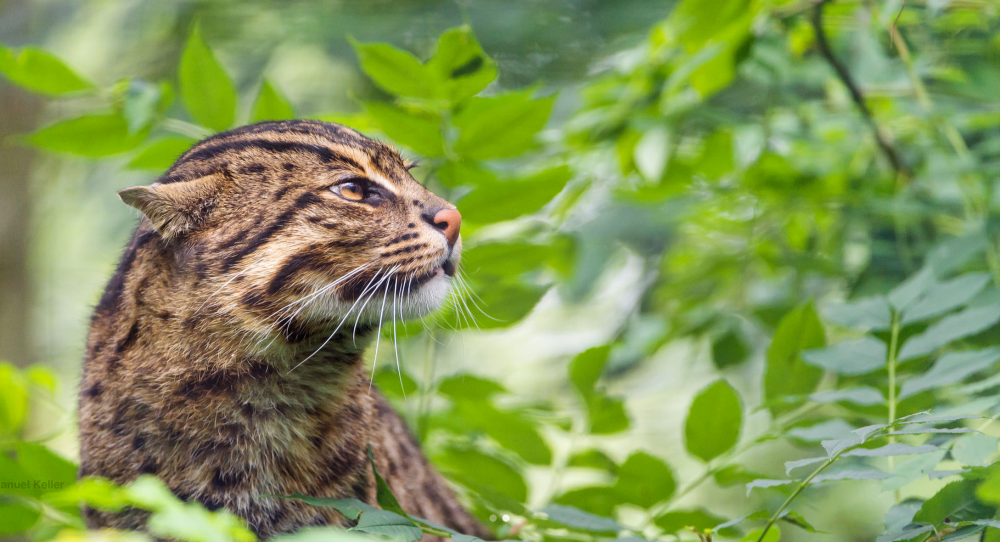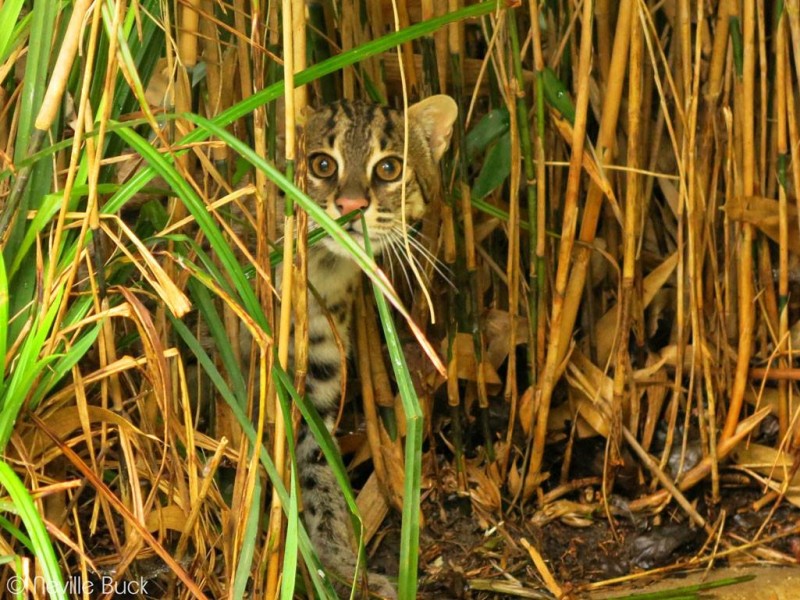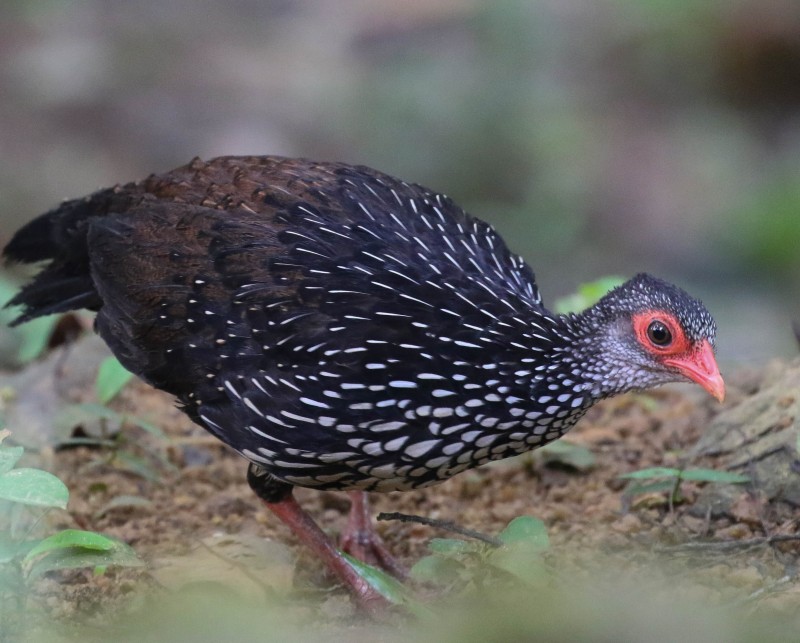
The wetlands in Sri Lanka are shrinking and the wildlife is rapidly losing their habitat. Except for one feisty cat; it is fighting back and it is fighting hard. The second largest cat in Sri Lanka – second to the leopard – is adapting to city life as they prowl in and around urban areas; even Colombo.
A fishing what?
Also known as the handun diviya, this feline can get to be four feet in length from nose to tail – slightly smaller than a female leopard (not taking into the account its tail length), which it’s often mistaken for. This and the spots on its fur lead to this hasty surmise, during those rare, fleeting sightings. But the fishing cat, on closer inspection, has lines on its back, webbed feet, short legs, is stocky, and has little ears that are pulled back into its head when it dives deep into water; far-flung from how you would describe a leopard.

A Fishing Cat – Image Courtesy, Environmental Foundation Sri Lanka
Unlike the leopard, however, there is very little information about fishing cat available. Researchers have always been more interested in studying the impressive leopard that has stolen all the lime light. The smaller wild cats, such as the fishing cat and the rusty-spotted cat, among others, have largely been ignored.
Which is unfortunate because the smaller wild cats are fascinating in their own right. Apart from their curious anatomy (a cat with webbed feet?), fishing cats are known to sit patiently by a body of water and tap the surface, mimicking insects hovering over, and as soon as a curious fish approaches, the cat scoops it up, and done – dinner is served!
Smarter than your average cat
We met up with young researcher and wildlife conservationist, Anya Ratnayaka, to find out more about the fishing cats and how they are taking to city life (or rather how we are taking to them).
According to Anya, limited research has been carried out even internationally about the fishing cats. “This research project started out in 2006 but was interrupted for security reasons during the war. Research included setting up cameras and this was a problem. Now almost ten years later it’s back in full swing”, says Anya, while explaining how she and her team are working from scratch, as there’s no previous research records they can use for reference. These include estimates of how many fishing cats there are in Sri Lanka, but it is agreed that on a global level the fishing cat is an endangered species.
“We know that fishing cats are in urban regions and there have been a few sightings in Colombo. The latest being on Elibank road. We know that they have moved into urban areas and they are adapting to suit their new environment. With our research we are trying to find how they are adapting. This, however, is difficult as they are nocturnal animals and very elusive”.
Anya explains how it took several months to finally catch a sighting of a fishing cat for which they had set a trap. “We knew it was there because we saw the pugmarks. We had set up a trap and every morning we could see that it had walked around the trap”. Disheartened, they had finally decided to give up on their search for the particular fishing cat. The hen in the trap and was allowed to wander in the safety of the compound of some residences nearby. Within an hour the sly fishing cat successfully caught its prized hen.
The fishing cat knew too well to enter the trap to get the hen. Instead it planned and waited patiently for the right time to strike. And that, Anya says makes it all the more difficult to study the creatures. They are extremely intelligent. “A few of the times we have come across fishing cat, it has been by accident. The one on Elibank road was caught only because it had its head stuck in a drain”. Even the most intelligent of animals make miscalculations.
It also doesn’t help that the fishing cat is nocturnal. According to Anya though, more recent sighting have been during the day-time and she believes this is part of the process of their adapting to the city surroundings.
Living among us? Are they dangerous?
Hide yo kids, hide yo wife… No, the fishing cat isn’t going to deliberately attack people. If approached and you make them feel threatened, they might, just as any untamed animal would. Anya says it’s quite alright for fishing cats to live among us in the city. So long as we let them be, a peaceful co-existence is possible.
They probably have more reason to be afraid of us though. Not only are we depriving them of their wetlands, forcing them into the city, but motorists are ensuring their rapid decline into extinction. There have been quite a few reports of fishing cat road kill. And it doesn’t end there; fishing cats are also hunted and eaten by villagers.
It’s about time we gave the fishing cats space to live; they are fighting hard against the odds, trying to adapt to city life since we are robbing them of their habitat. It would be a shame to see these highly intelligent, web-footed, nocturnal felines go extinct.
Featured Image Courtesy Tambako Photography








